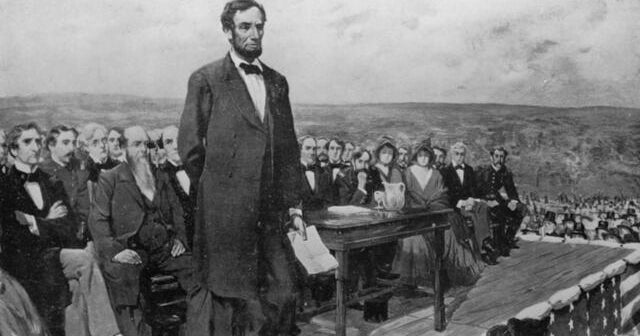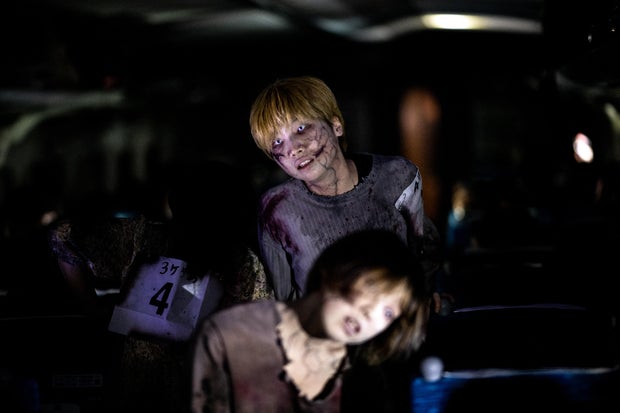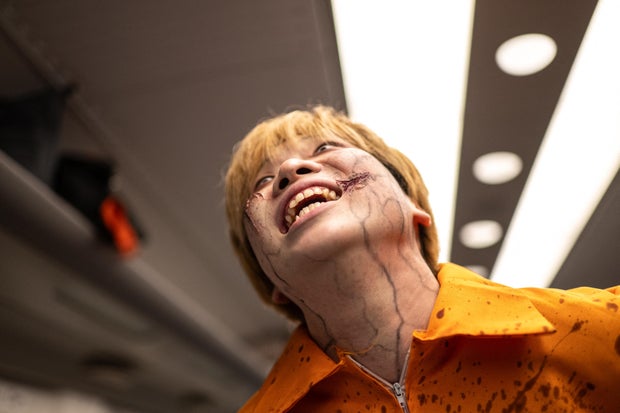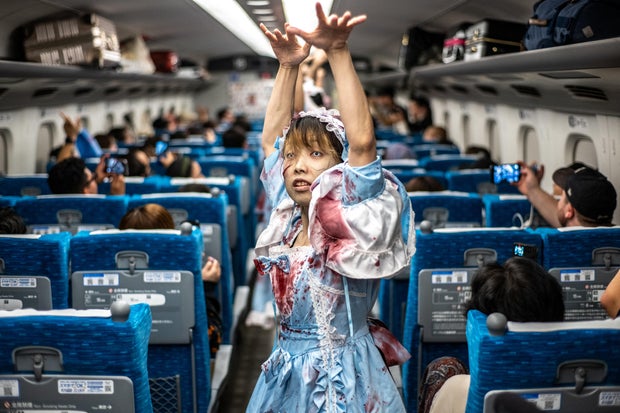CBS News
Husband of U.S. journalist detained in Russia: “I’m not going to give up”

Fifteen-year-old Bibi Butorin has not been at home with her mom in Prague since last spring. Her mother, Alsu Kurmasheva, an American-Russian journalist, is now detained in Russia. “My mom is definitely my biggest inspiration,” Bibi said. “And I just miss her, like, more than I can possibly say. And I worry about her safety so much.”
She said her family understood that it was a risk for her mom to go to Russia: “But she was only going to go for two weeks, and it was for my sick grandmother.”
Kurmasheva was about to return in June from that personal visit to Kazan, when Russian authorities confiscated her passports. She’d not reported her U.S. citizenship. Kurmasheva was permitted to stay with her mom, until October. That was when masked police officers came knocking on her mother’s apartment door, and took Kurmasheva away.
CBS News
It’s turned Pavel Butorin into a single dad of sorts. Their girls both have U.S. citizenship like their mom. “She is in jail in Russia because she is an American citizen, and because she’s a journalist,” said Pavel. “And it seems like the Russian government is just building more cases against her.”
Kurmasheva’s pre-trial detention was extended until April 5. She’s facing charges of failure to self-register as a foreign agent, and disseminating false information about the Russian army, which could mean prison sentences of up to five and ten years, respectively.
Kurmasheva is listed as an editor on a book, “Saying No to War,” featuring stories of everyday people who oppose Russia’s invasion of Ukraine. “I know that this book is a problem; it’s featured in her case file,” said Pavel. “There is nothing incendiary, nothing criminal about these stories. There’s no calls for violence in the book. It’s just opinions – not even Alsu’s opinions. But as a journalist, she certainly has the right to collect and publish any opinions.”
Butorin and Kurmasheva are both journalists with the Prague-based Radio Free Europe-Radio Liberty (RFE/RL). It’s funded by U.S. taxpayers but is editorially independent, and reports news in 27 languages and 23 countries, including Iran and Afghanistan.
Steve Capus is RFE/RL’s president. “When freedom of expression is being shut down in one place after another after another, when the lights are turned out in one place, we turn them back on,” he said. “Our place is committed to the fundamental practice of accurate journalism where it might not otherwise be practiced these days.”
That puts his journalists at risk.
Capus, who’s worked at CBS and NBC, keeps photos of Kurmasheva and three other RFE/RL journalists who are currently detained (one in Russian-controlled Crimea, and two in Belarus) next to pictures of reporters who’d died while on duty.
“It has a way of kind of grabbing you and making you pay attention, and realize there’s an awful lot at stake here now – and never forget that they need to come home,” Capus said.
They’re in regular contact with the Wall Street Journal, whose reporter, 32-year-old American Evan Gershkovich, is also detained in Russia, arrested on espionage charges.
Doane asked, “Many Americans have not heard of Alsu. Why is Alsu’s name not as familiar to Americans?”
“It should be,” said Capus. “President Biden brought her up by name at the end of December. All of us are working our contacts to get as much attention for her case as we can.”
Jodie Ginsberg, who runs the Committee to Protect Journalists (CPJ), in New York, calls Kurmasheva’s case “extremely worrying.”
She says that since the full-scale invasion of Ukraine in 2022, the detention of journalists has happened much more frequently. “New laws are brought in that make it extremely difficult to report on the war,” Ginsberg said. “Even calling it a war can bring you a jail sentence.”
Globally CPJ figures there are 320 journalists jailed for their work. Most are imprisoned for reporting in their own countries, with nearly half in just five nations (Russia, Iran, China, Myanmar and Belarus).
“That’s, I think, a reflection of the democratic decline we’ve seen over a number of years,” Ginsberg said.
CBS News
Of the 17 foreign journalists detained worldwide, 12 are jailed in Russia. Ginsberg calls it “state-sponsored hostage-taking.” She said, “There’s a two-fold effect when you arrest a journalist, particularly when you arrest a journalist with foreign citizenship, as we see in Alsu and Evan’s case: You have a political prisoner, so you have someone with which to negotiate with the U.S.; but this kind of action sends a powerful message to all journalists that they are not welcome.”
The U.S. classifies Gershkovich as “wrongfully detained,” but has not yet given that status to Kurmasheva. The State Department told “Sunday Morning” it’s “deeply concerned” about Kurmasheva’s detention, and continues to seek access to her, noting it “continuously reviews the circumstances surrounding the detentions of U.S. nationals overseas.”
Ginsberg said, “What happens when you designate an individual, a U.S. citizen, as ‘wrongfully detained’ is, you bring more resources from the government on their case. And now we really need to make her case as well-known as Evan’s. It’s really important that both of them, and all the journalists wrongfully detained, are freed.”
Efforts to raise Kurmasheva’s profile are underway, from a billboard in Times Square, to a group of friends gathering at a Prague restaurant.
Todd Benson, from Seattle, said Pavel Butorin and his girls are showing a great face since Alsu’s detention: “But I think, deep down, they’re hurting.”
And that hurt surfaced while Pavel was reading a note his wife sent from jail: “Celebrate freedom and love, Alsu.”
Declaring her “wrongfully detained” is up to the U.S. government. Ultimately, Alsu Kurmasheva’s fate is to be decided by the Russians. So, for now, Pavel tries to control what he can. “I need to keep it together,” he said. “I don’t want emotion to get involved.”
Doane said, “I think anyone would understand being emotional…”
“Maybe that’s what they want – maybe they want us to break down and surrender and give up,” said Pavel. “I’m not going to give up. We will not rest until we see Alsu here with her family at home.”
For more info:
Story produced by Julie Kracov and Duarte Dias. Editor: Carol Ross.
See also:
CBS News
Japan “zombie” train spooks passengers ahead of Halloween

It’s usually a serene two-and-a-half-hour ride on Japan’s famously efficient bullet train. But the journey quickly descended into a zombie apocalypse, with passengers screaming in terror.
Organizers of Saturday’s adrenaline-filled trip, less than two weeks before Halloween, touted it as the “world’s first haunted house experience on a running shinkansen.”
Aboard a chartered car of the shinkansen — the Japanese word for bullet train — were around 40 thrill-seekers, ready to brave an encounter with the living dead between Tokyo and the western metropolis of Osaka.
PHILIP FONG/AFP via Getty Images
The eerie experience was inspired by the hit 2016 South Korean action-horror movie “Train to Busan”, in which a father and daughter trapped on a moving train battle zombies hungry for human flesh.
All seemed normal at first as the bullet train made a peaceful departure Saturday evening, but it wasn’t long until the first gory attack.
The victims — actors planted in seats by the organizers — jerked in agony and then underwent a terrifying transformation before starting a rampage against their fellow passengers.
Event organizer Kenta Iwana of the group Kowagarasetai, which translates to the “scare squad”, said they wanted to “depict the normally safe, peaceful shinkansen — something we take for granted — collapsing in the blink of an eye”.
PHILIP FONG/AFP via Getty Images
Sitting next to one of the actors was Joshua Payne, one of many foreign tourists on board.
“I literally felt like I was in the film, just sitting here watching it take place in front of me,” the 31-year-old American told AFP.
“The fact that we can physically go from Tokyo to Osaka right now and have this whole performance at the same time… I think is really cool and maybe a little bit groundbreaking,” he said.
It was far from Central Japan Railway Company’s first experiment with the usually dazzlingly clean, accident-free shinkansen, a Japanese institution that turned 60 this year.
After demand for long-distance travel plunged during the COVID-19 pandemic, the railway operator started renting out bullet train compartments for special events to diversify its business.
A sushi restaurant, a bar and even a wrestling match have been hosted on the high-speed train, and carriages can also be reserved for private parties.
PHILIP FONG/AFP via Getty Images
Marie Izumi of JR Central’s tourism subsidiary told AFP that she was surprised by the idea for a zombie-themed commute when Kowagarasetai approached her, thinking it would be “almost impossible to pull off”.
But the event has convinced her of “new possibilities” for the bullet train, Izumi said, adding that concerts and comedy shows might be a good fit in the future.
On Saturday, toy chainsaws and guns were used as props, but depictions of extreme violence and gore that could tarnish the shinkansen’s squeaky-clean reputation were avoided.
To counterbalance the subdued horror, the two-and-a-half-hour tour was peppered with light-hearted performances by zombie cheerleaders, magicians and comedians, including a choreographed dance to Michael Jackson’s “Thriller”.
“Nobody wants to sit tight for such a long time being constantly exposed to horror,” said Ayaka Imaide from Kowagarasetai.
Many aboard the zombie-infested train said the experience alone was worth the ticket price of up to 50,000 yen ($335).
“It was very immersive,” Naohiko Nozawa, 30, told AFP. “And the appearance of so many different kinds of zombies kept me entertained all the way.”
CBS News
How historical turning points shaped the United States

Watch CBS News
Be the first to know
Get browser notifications for breaking news, live events, and exclusive reporting.
CBS News
A dog tore off her upper lip. Five surgeries later, she’s a voice for others with facial injuries.

At 20 years old, Brooklinn Khoury knew she wanted to do something different with her life. She was teaching English as a second language courses, but she wanted to focus on her true passion: skateboarding.
For a while, everything was going just as she planned. Khoury was building a career in the worlds of both skateboarding and modeling, landing major sponsorships and being featured in Vogue. Through the early days of the coronavirus pandemic, she continued building her platform and honing her skills. She wanted to be a voice for women in the sport, and had garnered tens of thousands of social media followers who were invested in her journey.
In November 2020, her cousin invited her to take advantage of a cheap flight and visit her in Arizona. The visit was normal, and the biggest worry Khoury had was about a zit on her upper lip that she was cropping out of selfies sent to friends. Then, something Khoury still can’t identify triggered her cousin’s pit bull, a dog she had known for years.
The dog launched at her face, Khoury told CBS News, and bit down. The pit bull, which weighed “100-something pounds easily,” clamped its jaws around her upper lip and stayed there for nearly a minute. Khoury said that she was too startled to scream, but when she finally got the dog to release its grip, she saw “something fly on the wall and then fall to the floor.”
“It didn’t really hit that that was my lip. I couldn’t process that,” Khoury said. She didn’t realize the true extent of the damage for several minutes, when she opened her phone’s selfie camera to inspect what she thought might just be a deep cut. Instead, she found that “everything from the nose down was completely ripped off.”
Feeling “completely alone” and wanting better
Khoury immediately went to an area hospital, sitting alone in her room because of coronavirus restrictions on visitors while she waited for hours for a plastic surgeon to drive in. She scrolled through social media to see if she could find anyone else with a similar injury — and found nothing.
“I couldn’t find anybody that had no upper lip and was sharing a story or sharing a problem. I don’t want anyone to feel how I felt in that moment, which was just alone and very secluded,” Khoury said. “I picked up my phone and just started recording everything.”
Khoury detailed the time in the hospital and captured multiple images of the injury, even as her phone battery dwindled. She had thought the plastic surgeon might be able to reattach her lip, but it couldn’t be done: Instead, the injury was sewn up and the skin from the inside of her mouth was flipped to the outside to close the wound. It left her with no upper lip and massive scarring. Her teeth were visible even when her mouth was closed.
Just days after the surgery, Khoury was sharing photos and videos on social media. It was a huge change from the modeling photos and athletic shots she had previously been known for posting.
“I genuinely wanted to share my story. I felt so alone in the hospital … I needed a community of difference in a world of perfect,” Khoury said. “So I just made sure to be super vulnerable and have it be a safe space to post what I wanted to post. I just wanted somebody else, if they were going through it, to be able to relate.”
Finding help
Even as Khoury mentally prepared to “rock no lip” for the rest of her life, she hoped more could be done to bring her smile back. She said she saw dozens of doctors in the year after the accident, but was told that little could be done to fully restore her face. It wasn’t until she met Dr. Nicholas Do, a plastic surgeon at UCLA Health, that she finally felt hopeful again.
Do, who has extensive experience with microsurgery and craniofacial reconstruction, spent four hours with Khoury, answering every question she had and beginning to develop a plan to restore her face.
It wasn’t a simple process. Do told Khoury it would be multiple surgeries over the course of months, and said that it could take up to two years for the process to be completed. To repair the injury and return her face to its former appearance, Do merged a number of surgical techniques that have been developed over the decades. He even drove to a Hollywood special effects shop to get the supplies necessary to make casts of Khoury’s face so he could conduct trial runs of different surgical options.
The first of five surgeries took a piece of skin from Khoury’s wrist and attached it to where her upper lip had been. This created a thick, fleshy area that Do could connect to the blood vessels in the face and build the rest of the repair from. He compared the process to a sculptor finding a big chunk of marble, then carving a statue from it. The bulky skin changed Khoury’s speech, the way she ate, and more.
Brooklinn Khoury / UCLA Health
“I got so used to having no lip and I was so OK with what I looked like that I was actually scared for another change,” Khoury said.
Her lip stayed that way for several months. Then, a second surgery advanced skin through her nose, helping Khoury breathe bigger breaths and creating a better surgical area for Do to work within. The third surgery was a reconstructive rhinoplasty, which helped alter the appearance of Khoury’s nose and adjust the skin in the area. The fourth and fifth surgeries focused on refining Khoury’s lip.
When it was all done, Khoury’s face looked much closer to her original appearance. Khoury said when she looks at the photos she took immediately after the accident, she’s shocked by the difference.
“Now it’s something I look at and I’m like, ‘Oh God, I can’t even believe I went through that,'” Khoury said. “Then I look at my face now, and I’m so thankful and grateful that I look the way I do. If you were to tell me two years ago that I would have looked this way, I would have probably not believed anybody.”
Creating a community online
Khoury’s Instagram page has become the exact kind of account she looked for in the hours after being attacked. While undergoing the surgeries, she posted frequently about her life and spoke candidly about what she was going through. Many of the posts show her engaging in the same activities other women her age enjoy. Videos and photos show her trying out lipsticks and practicing skateboarding moves. In the comments, people share their own stories of reconstructive surgery.
“I can’t even believe how many people have shared their stories with me,” said Khoury. “It’s been such a beautiful experience. I felt so alone, and now I have such a beautiful community of people. … I felt so alone in the beginning, and now I have so many people sharing their stories.”
Paige Towers is part of that community. The 23-year-old was attacked by a dog in December 2023. She lost part of her lip and had multiple bites on her body. In the days after the attack, she was feeling overwhelmed and struggling to “accept that a part of my face was altered in a way” she never expected. While scrolling Instagram one day, she found Khoury’s page.
“I watched a reel about her experience and maybe stalked her account a bit,” Towers said. “I felt inspired by her journey and confident in my own. The fact that she could endure being attacked so severely and still press on with grace made me feel seen. … Her account only proved to further boost my own self-realization that my journey of healing from this trauma can happen and was happening.”
It’s not what Khoury expected, but more than four years after quitting her job, she has found the new life she was looking for.
“It trips me out every day,” Khoury said. “It’s a full circle.”









